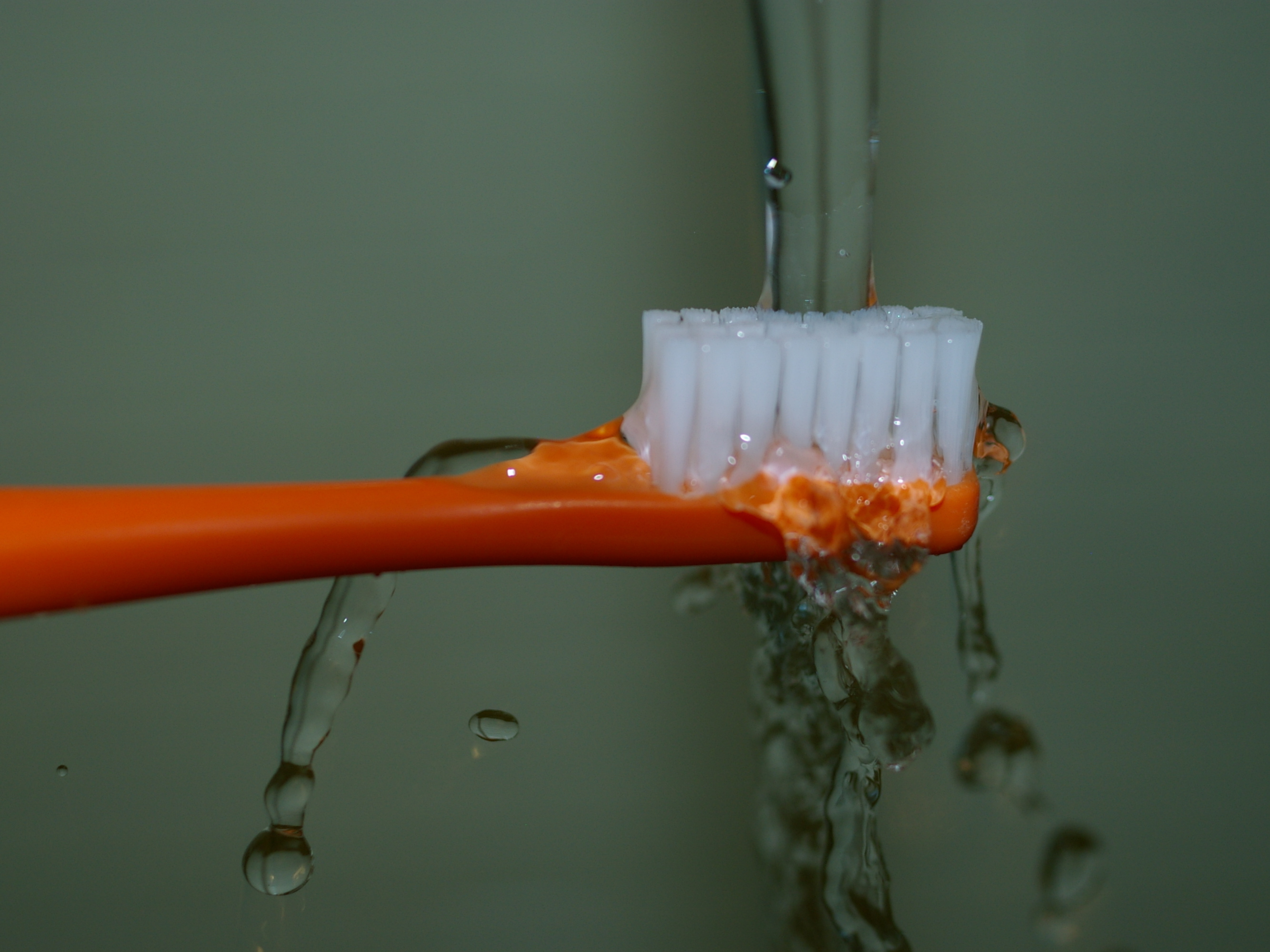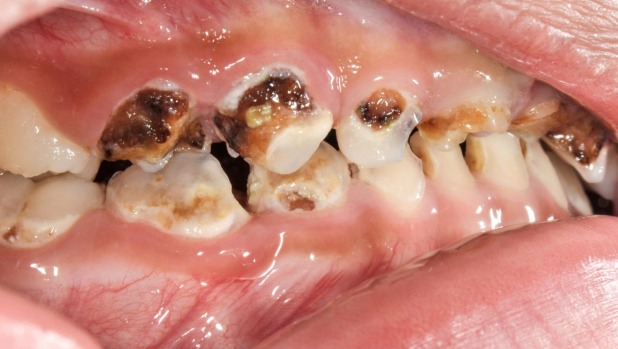Teresa Goodin, a First Light Flower Essence practitioner, presented a submission on fluoridation at New Plymouth Council’s 3rd June Council Meeting. She was talking on behalf of Stan Litras from the Fluoride Information Network for Dentists (FIND) and represented Fluoride Free NZ and Fluoride Free Taranaki. This is the second discussion on the meeting, the first being “Health experts talk about fluoridation“.
Here I address some of the points she made about water fluoridation, and correct the misinformation and the confusion she presented on this issue.
What fluoride is in the water?
Drinking water contains only fluoride ions. It doesn’t matter what the source of the fluoride is, as added chemicals like fluorosilicates hydrolyse on dilution and end up exactly like naturally occurring fluoride ions that are already present in the water supply. Natural calcium fluoride doesn’t exist in drinking water, as it dissociates into calcium and fluoride ions when it dissolves. Adding Hydrofluorosilicic acid (HFA) into the water supply is just a method of adjusting these levels of fluoride.
Nobel Prize winners
Teresa claimed ’14 Nobel prize winners object to fluoridation’, which, while superficially impressive, is really just an argument from authority and a fairly trivial figure. Most of those listed people are dead, so it’s difficult to gain personal confirmation of their stance. There is also no differentiation made between the number of the 14 who had some reservations about fluoridation, and those who were opposed. There have been many hundreds of Nobel Prize winners. The only reliable inference that can be made from the data of Nobel Prize winners’ opinions is that many of them supported fluoridation or had no firm viewpoint.
See “Nobel Prize winners and fluoridation” blog article for more information.
US lowering fluoride levels
The US has recently lowered their recommendation of the amount of fluoride that is ideal in water to 0.7ppm – this is to reduce levels of mild fluorosis. The decision was not an admission of harm being caused by higher levels of fluoride. “Mild” and “very mild” fluorosis have no effect on the appearance, form or function of teeth. In fact, it has been demonstrated that mildly fluorosed teeth are more resistant to decay.
The 2009 New Zealand Oral health Survey found very little difference in fluorosis between fluoridated and non-fluoridated areas. Any increase in fluorosis due to Community Water Fluoridation (CWF) would be in this “very mild” to “mild” fluorosis range.

Thousands to repair fluorosis?
While it may cost thousands of dollars to repair severe fluorosis, we do not see this kind of fluorosis at optimal levels of fluoride. If one wanted to reduce mild fluorosis, even though it is the kind of effect that most likely only dentists would notice, it is a relatively cheap and easy procedure.
IQ
The best study in the world on IQ and fluoride, when ingested in NZ’s recommended range of fluoridation, shows no effect of fluoride on IQ.
The studies brought up by Teresa are mainly found published in obscure Chinese scientific journals. China’s water is not artificially fluoridated, and the studies in question involved well water with high levels of naturally occurring fluoride – levels far above the recommended level of 0.7ppm.
See “Myth-busting fluoridation and IQ” article for more information.
Other countries don’t do it
Teresa claimed that some countries don’t artificially fluoridate their water supplies. It could equally be stated that 1.1 billion people do not have access to an improved source of drinking water, while another 2.6 billion lack basic sanitation.
Just because some countries don’t utilise certain public health measures, this doesn’t mean that other countries shouldn’t. However, 377.7 million people in 25 counties have access to artificially fluoridated water supplies, and a further 57.4 million people in 28 countries have naturally fluoridated water supplies that are already at the optimal level. This is no small number.
Countries such as Jamaica, Costa Rica, Mexico, Uruguay, Colombia, Switzerland, France and Germany use salt fluoridation as an alternative to water fluoridation. A number of these countries make sure that this salt gets added to school meals and baked into commercial breads.
Countries such as Bulgaria, Thailand and Chile use milk fluoridation, with 800,000 children in five countries participating in milk fluoridation programs.
Israel is already looking into reinstating fluoridation, after only a year of having removed it from their water supply, to reduce the harm to children.
See “‘Other countries don’t do it’ excuse” blog article for more information.
Referenda are not the way to determine health policy
This point myself and many others would agree with – that councils, instead of using a referendum, should listen to both the experts in the field and their own local health boards on this matter.
US cities have removed fluoride
There have been cities in the USA that have removed fluoride, but to say that is to ignore half of the story – the number of people receiving fluoridated water in the USA has actually increased. The US Department of Health and Human Services’ (HHS) Healthy People 2020 initiative has set a goal of serving eighty percent of Americans with community water systems with optimally fluoridated water by 2020.
Fluoridated areas have more cavities?
One can’t use raw data when comparing fluoridated to non-fluoridated areas. Instead, one must look at the entirety of peer-reviewed papers to come to the best conclusion possible, even better if systematic reviews are used. For example:
The Water fluoridation Health monitoring report for England in 2014 reported: “In fluoridated areas there are 45% fewer hospital admissions of children aged one to four for dental caries (mostly for extraction of decayed teeth under a general anaesthetic) than in non-fluoridated areas.”
Health effects of water fluoridation: A review of the scientific evidence concluded: “A large number of studies and systematic reviews have concluded that water fluoridation is an effective preventive measure against tooth decay that reaches all segments of the population, and is particularly beneficial to those most in need of improved oral health.”
Water fluoridation for the prevention of dental caries key results showed: “Data suggest that the introduction of water fluoridation resulted in a 35% reduction in decayed, missing or filled baby teeth and a 26% reduction in decayed, missing or filled permanent teeth. It also increased the percentage of children with no decay by 15%.”
Effectiveness of Fluoride in Preventing Caries in Adults concluded in the abstract: “The prevented fraction for water fluoridation was 27% (95%CI: 19%–34%). These findings suggest that fluoride prevents caries among adults of all ages.”







Leave a Reply